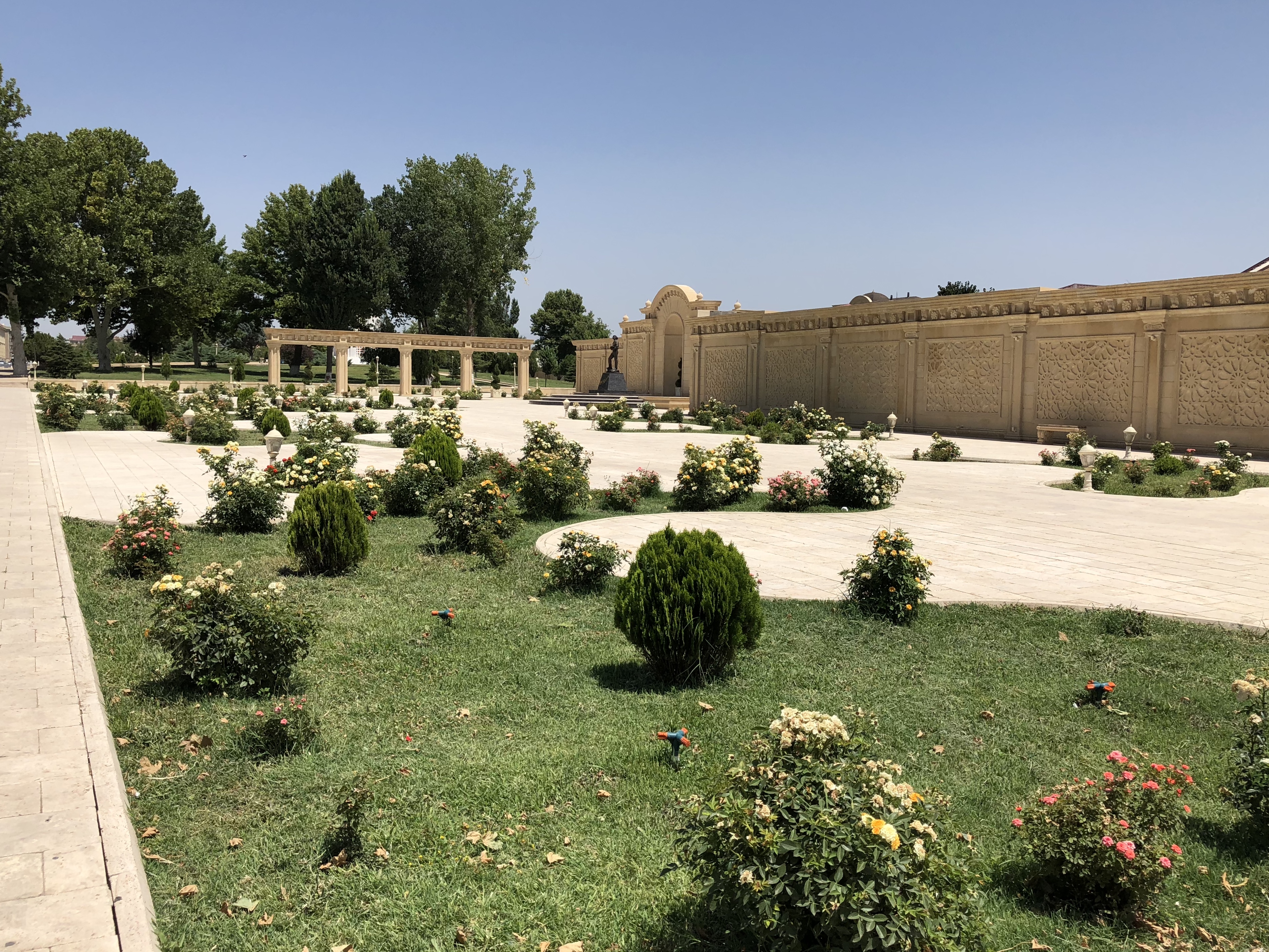
I hope no one has been holding their breath for Part III of my Naxçıvan series as this wrap-up to my day trip to Azerbaijan’s autonomous enclave has been a long time coming! In case your memory is bit foggy of where we left off, check out Part I and Part II before continuing…
Yezidabad qalası (Yezidabad Castle)/Naxçıvanqala Tarix-Memarlq Muzey Kompleksi
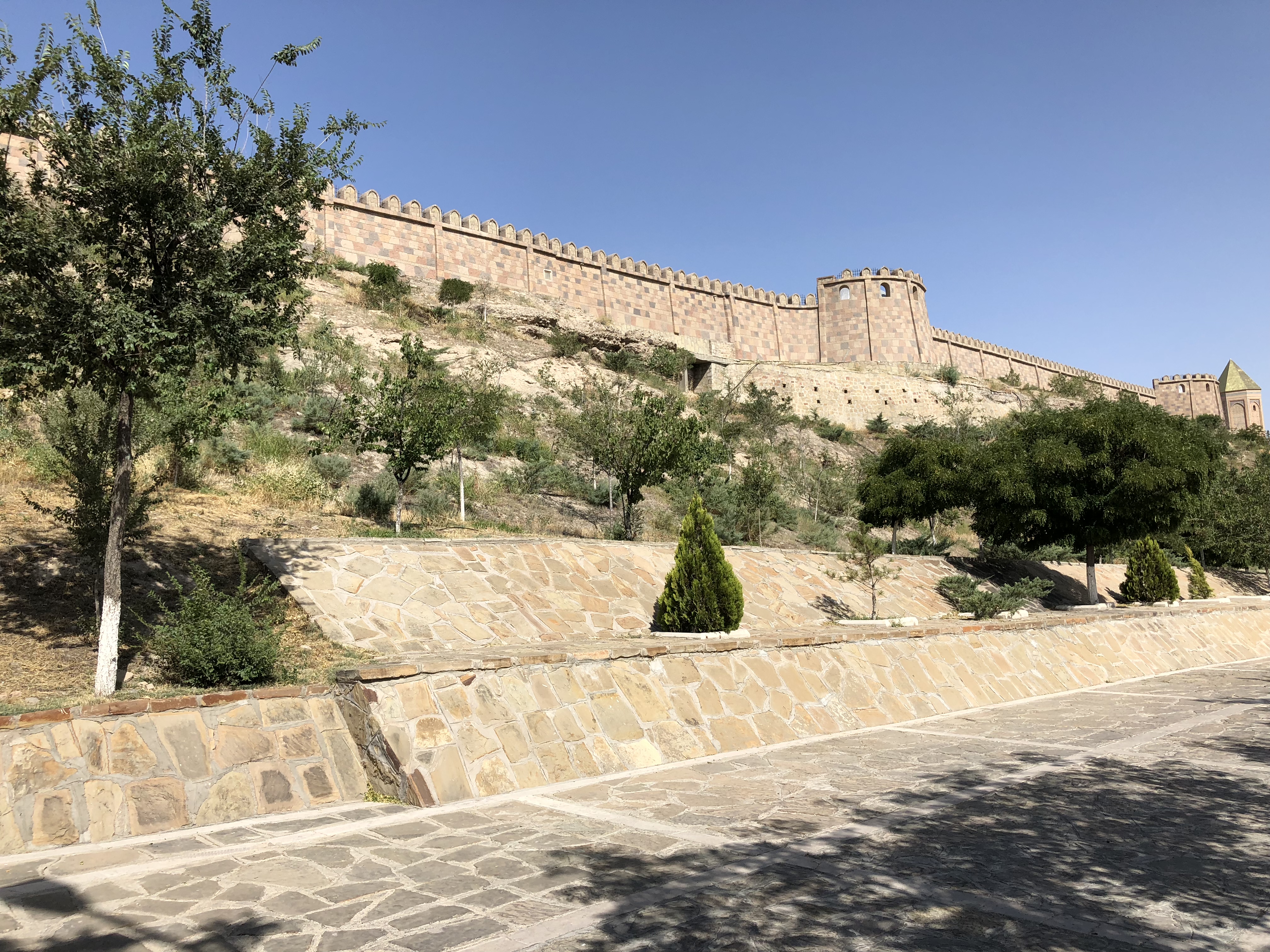
Over the past hundred years, the Caucasus seem to have no problem creating an unending stream of violent conflicts. There was a Soviet takeover, Soviet breakup, wars over Nagorno-Karabakh, Abkhazia, South Ossetia- and that’s just the tip of the iceberg. While no tragedy is greater than the loss of life, many buildings and monuments of great historical significance have been damaged beyond repair throughout the region because of the fighting.
Naxçıvan has suffered badly in this regard. How do you go about restoring a castle that was completely destroyed in war? When an art historian restores a Van Gogh, there’s still the base work by Van Gogh to work with. But what happens if the painting is turned to ash in a fire? What then? Sometimes when there’s nothing left to restore, one simply has to rebuild, and that’s exactly what Naxçıvan has done with Yezidabad Castle. The original castle was built between 632-652 AD, but by the end of the 20th Century, essentially nothing remained.
Construction of the new castle began in 2010 and was completed four years later. You can still visit the archeological ruins of the original castle via underground passageways in the castle complex. (It’s all about balancing the historic with the modern; yes, this castle is obviously now shiny and new, but the ruins remain underneath, preserving Naxçıvan’s ancient history and acting as scars of the recent past.) There is also a museum that houses many of the unearthed pottery and artifacts from the site. Climbing the new castle walls provides a stunning vantage point to see the southern tip of Naxçıvan, as well as the mountain of Iran in the distance.
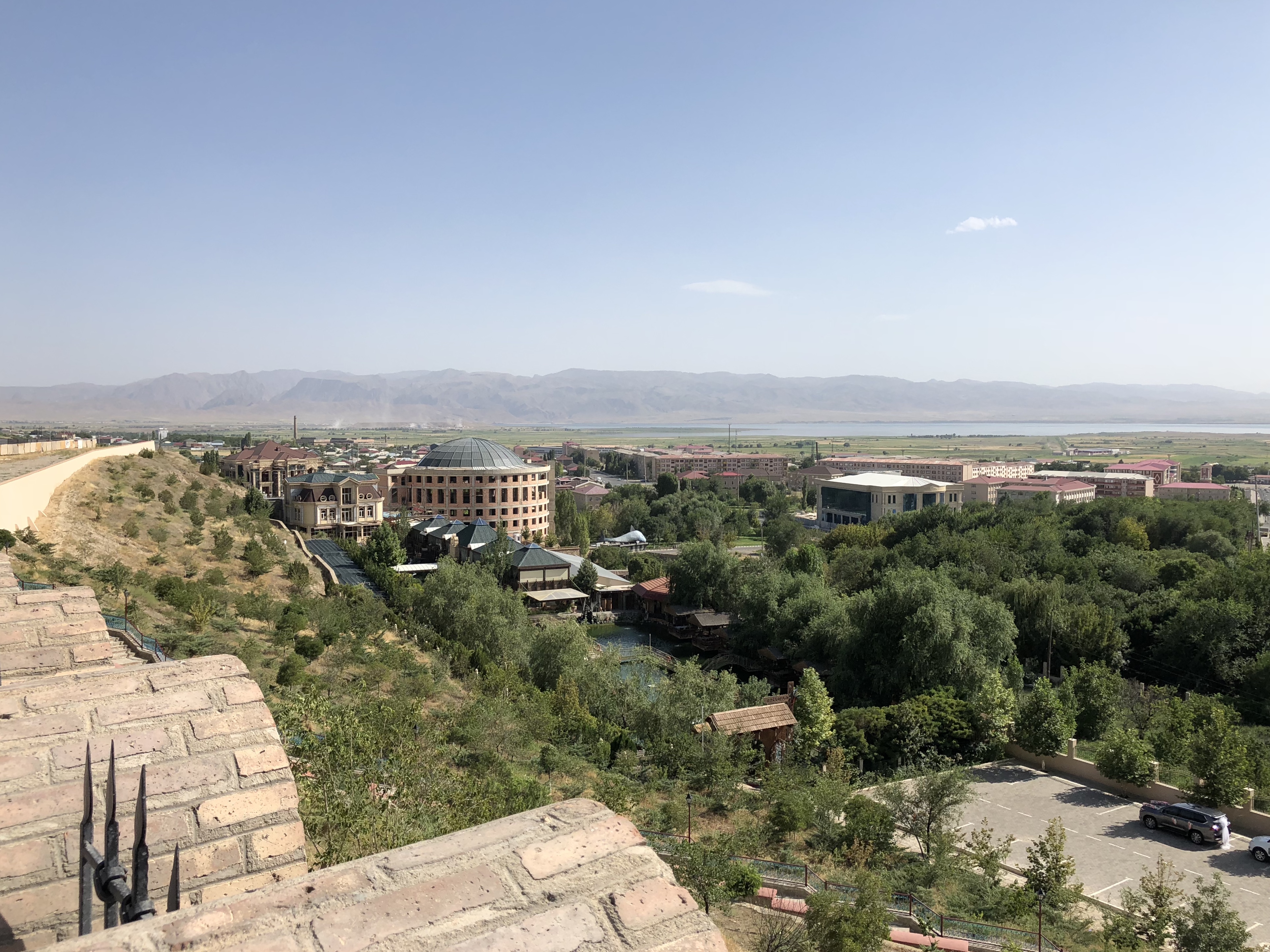
Nuh peyğəmbər türbəsi (Tomb of the Prophet Noah)
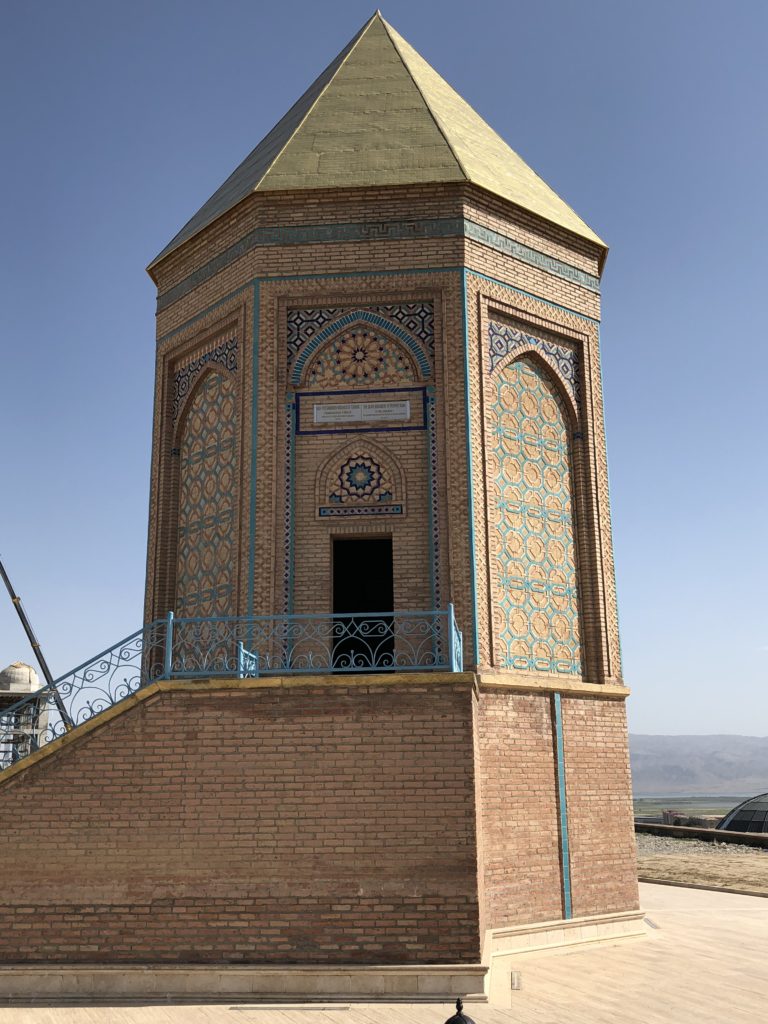
Nuh peyğəmbər türbəsi (Tomb of the Prophet Noah)
The most famous part of the castle complex is Noah’s Mausoleum- yes, that Noah, of ark fame. The current Mausoleum, rebuilt in 2006, stands over a burial pit that supposedly has pieces of Noah’s remains; you can peer into the burial chamber from above, but it is not allowed to descend the ladder to view the bones. Still, there is a guide stationed in the tomb who can explain the archeological history of the site and detail how the government rebuilt the tomb with the aid of old drawings and photographs.
Naxçıvan dövlət muiqili dram teatri (State Musical Dramatic Theatre)
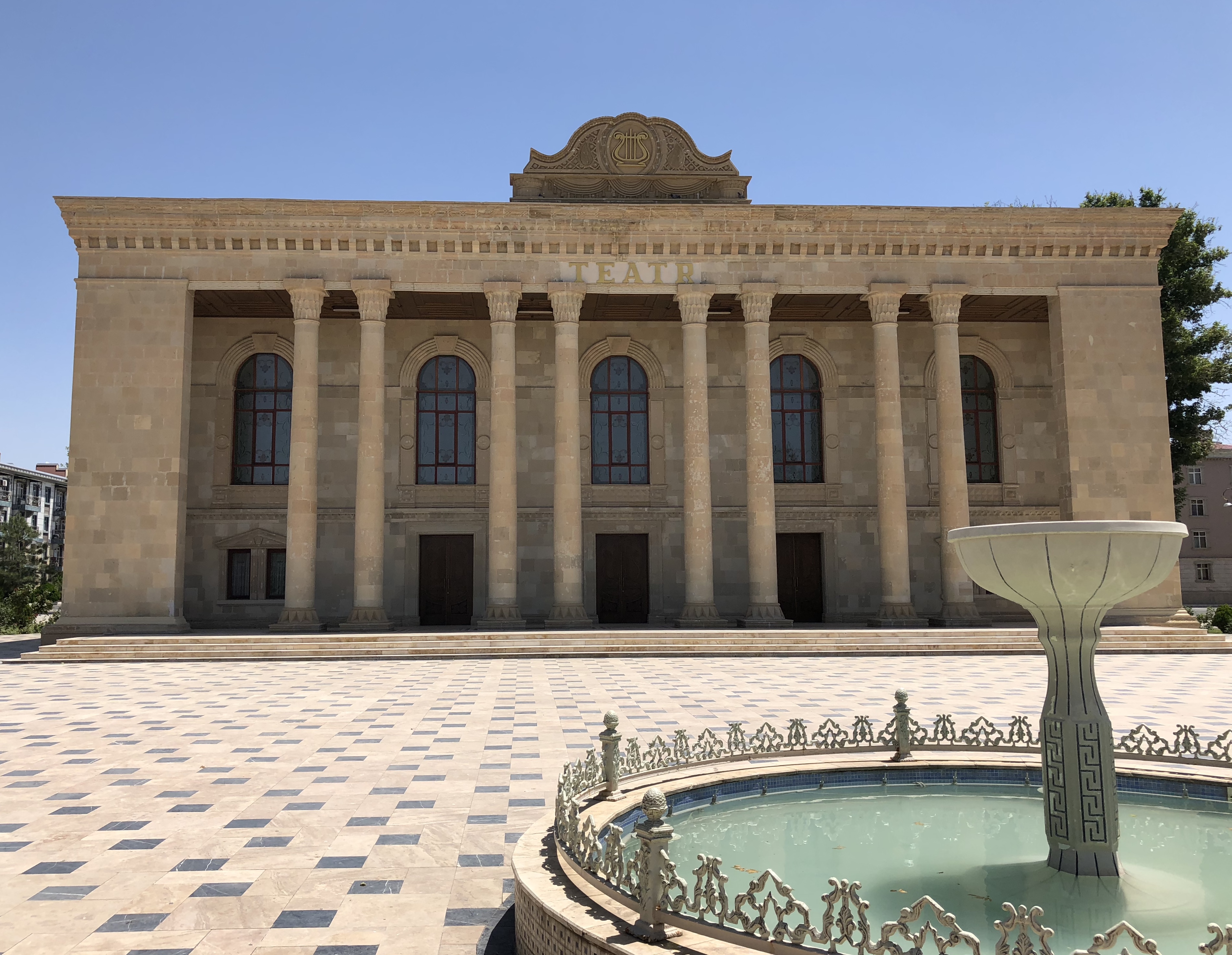
I don’t think I’ve ever visited a capital city and not sought out the National Theatre and/or Opera House. Spending so many of my evenings in New York at the theater fills me with some sort of kindred spirit connection to other theaters around the world.
Naxçıvan has a rather lovely theatre, with even lovelier gardens in the rear. Like the rest of the city, the grounds are insanely manicured and filled with rose bushes. If the sun hadn’t been so brutal, I would have lingered longer, but the heat is not to be trifled with in Naxçıvan!
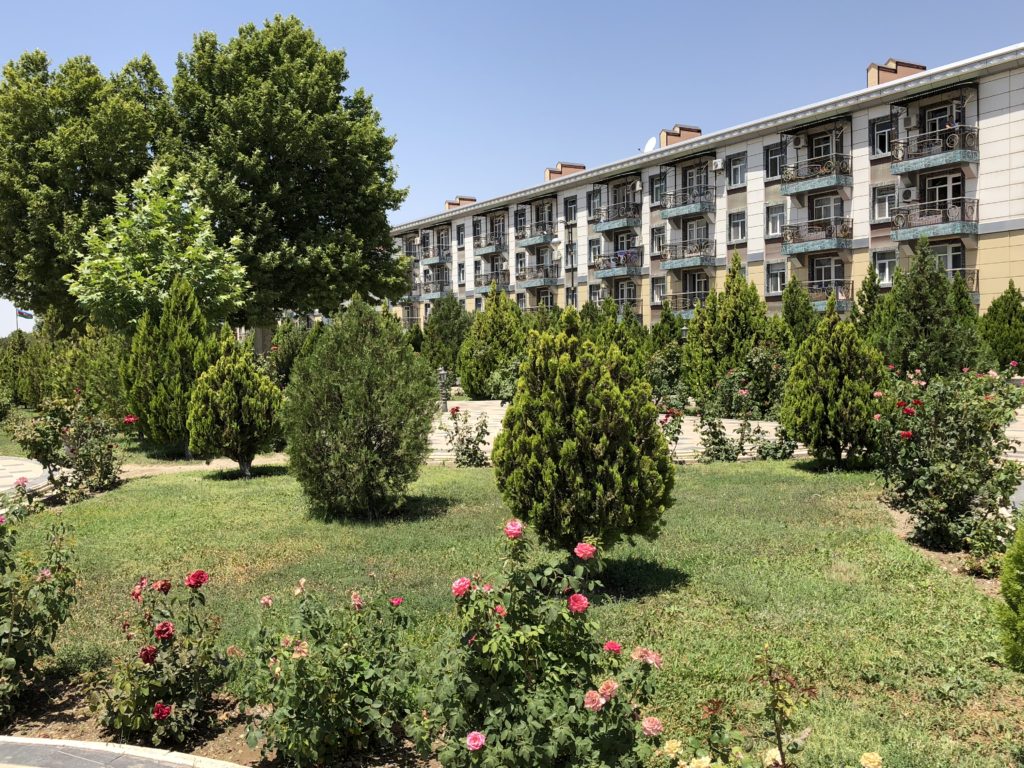
Heydər Əliyev muzeyi/museum
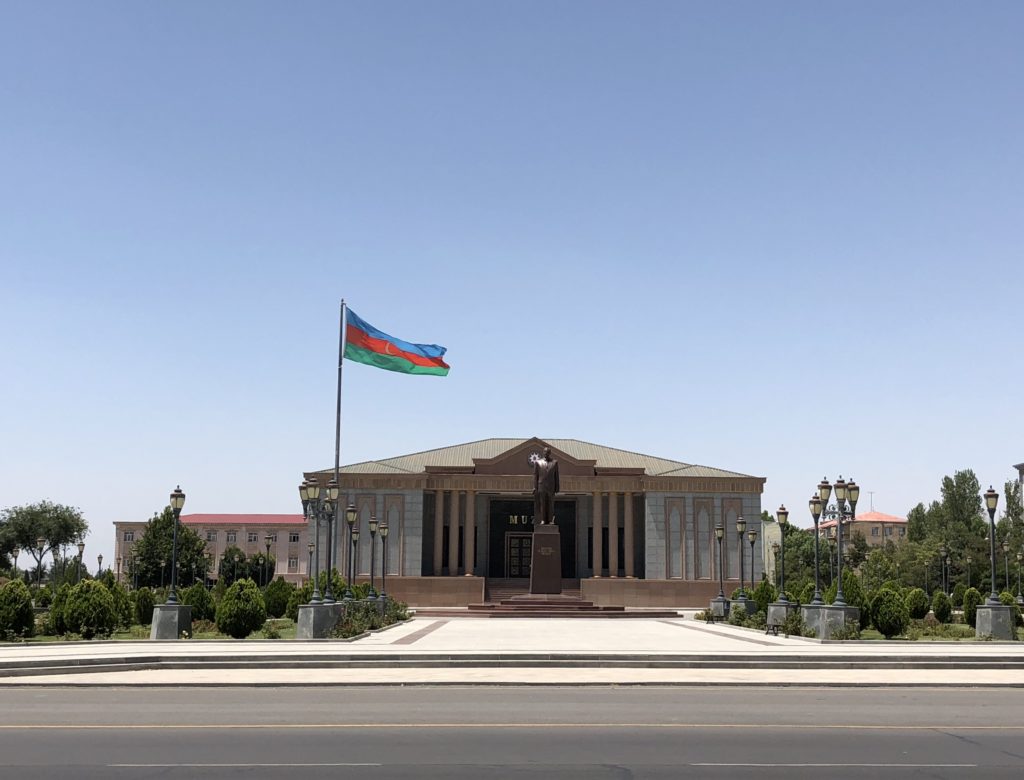
Directly across the street from the theatre is the Heydər Əliyev muzeyi, a shrine to the man who symbolizes Azerbaijan to the world at large. Although he has passed away, his presence is still very much felt throughout the country. His image and name are as prevalent as Washington or Lincoln in the US. Əliyev was born in Naxçıvan, and his ties to the miniature, isolated autonomous republic no doubt helped keep the two regions united after the events of the early 1990’s.
Əliyev rose through the ranks of Soviet Azerbaijani politics, eventually becoming the leader of the SSR. In the 1980s, Əliyev moved to Moscow where he mixed like oil and water with Gorbachev and was forced out of office. Instead of returning to Baku, Əliyev found solace in his native Naxçıvan, where he eventually was elected to its highest office.
When the Soviet Union officially went bust in 1991, there were essentially two separate Azerbaijani governments: one centered in Baku that governed Azerbaijan proper and Əliyev’s government in Naxçıvan. Azerbaijan went to war with Armenia and the Caucasus became a bloody battlefield. In 1993 a referendum was held and Əliyev was elected President of all of Azerbaijan. Had he lost, who knows what the fate of Naxçıvan may have been, but with him in power, Naxçıvan retained its title of autonomous republic, but was federally held together with Azerbaijan.
Əliyev served two terms as president (1993-2003), although his health was failing for much of his second term. Politically he strengthened trade relations with the EU and US and shepherded the oil boom that has made Azerbaijan the richest nation in the Caucasus since the collapse of the USSR.
The museum feeds into the cult of personality that surrounded his life and doesn’t look at his actions with much of a critical eye. Still, it’s worth checking out to gain the understanding that nothing happened in Azerbaijan for a good fifty years without somehow being entwined with or influenced by Əliyev.
Dövlət Bayrağı Meydanı və Muzeyi (National Flag Square and Musuem)
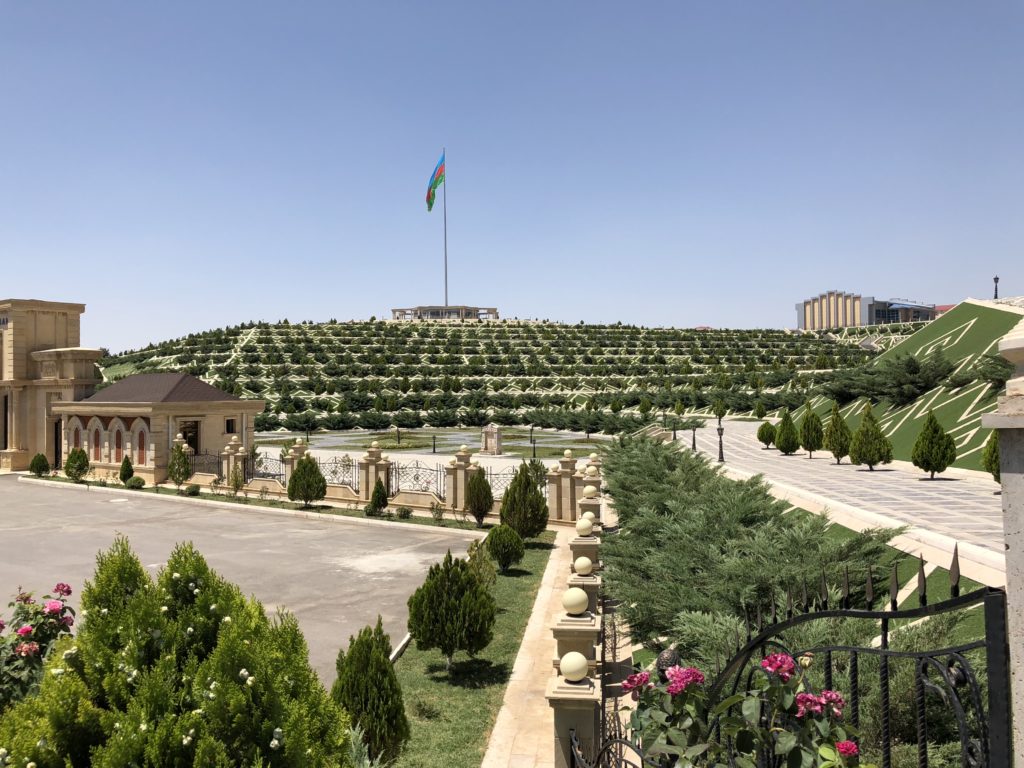
The National Flag Square is easily the most impressive spot in Naxçıvan City. It’s far too large to capture the impact of the square in one photo; truthfully the only way to see it properly is from the air, and happily all flights to and from Baku fly over the square. Reserve a window seat and be ready to snap some pictures.
The museum surrounding the giant flagpole is heaven for flag nerds like me. It not only traces the origins of the current Azerbaijani flag, but there are some really cool historical flags of Naxçıvan. As with all museums in the Naxçıvan, it is completely free.
I’ll leave you with some images of the square from below and above…
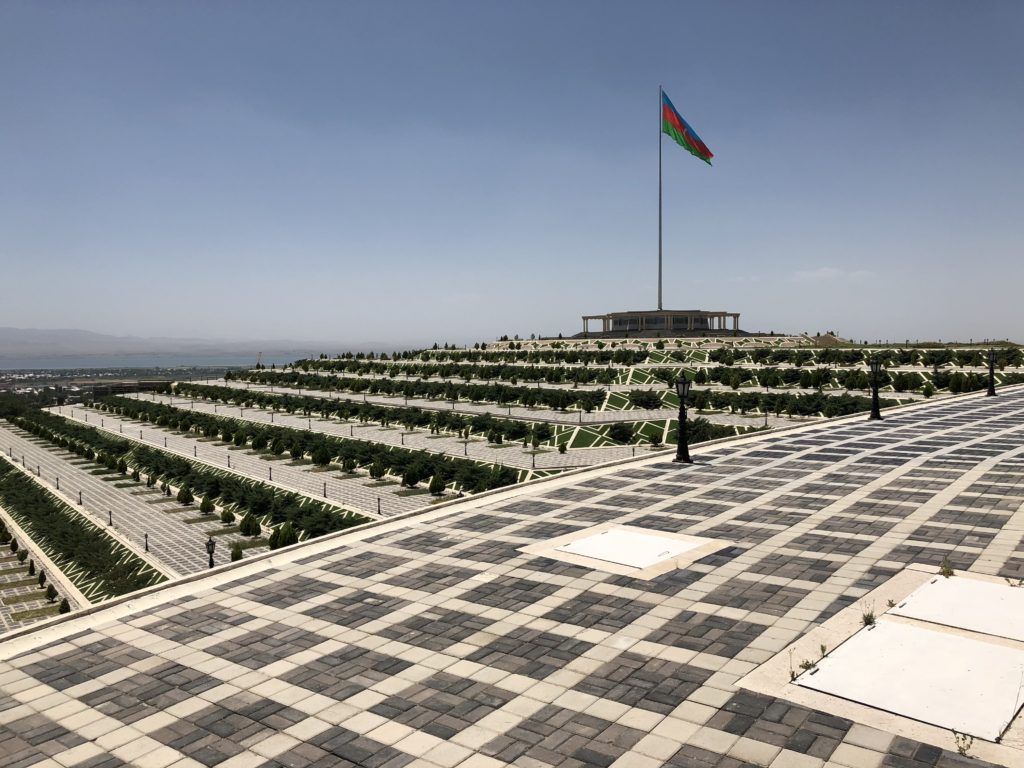
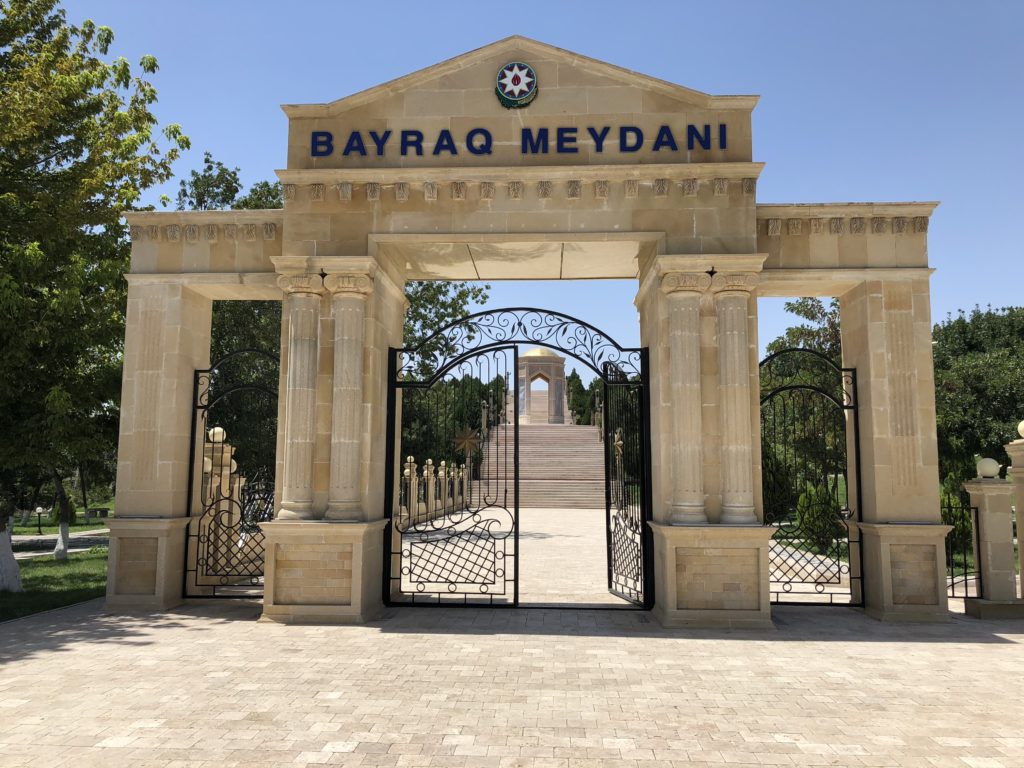
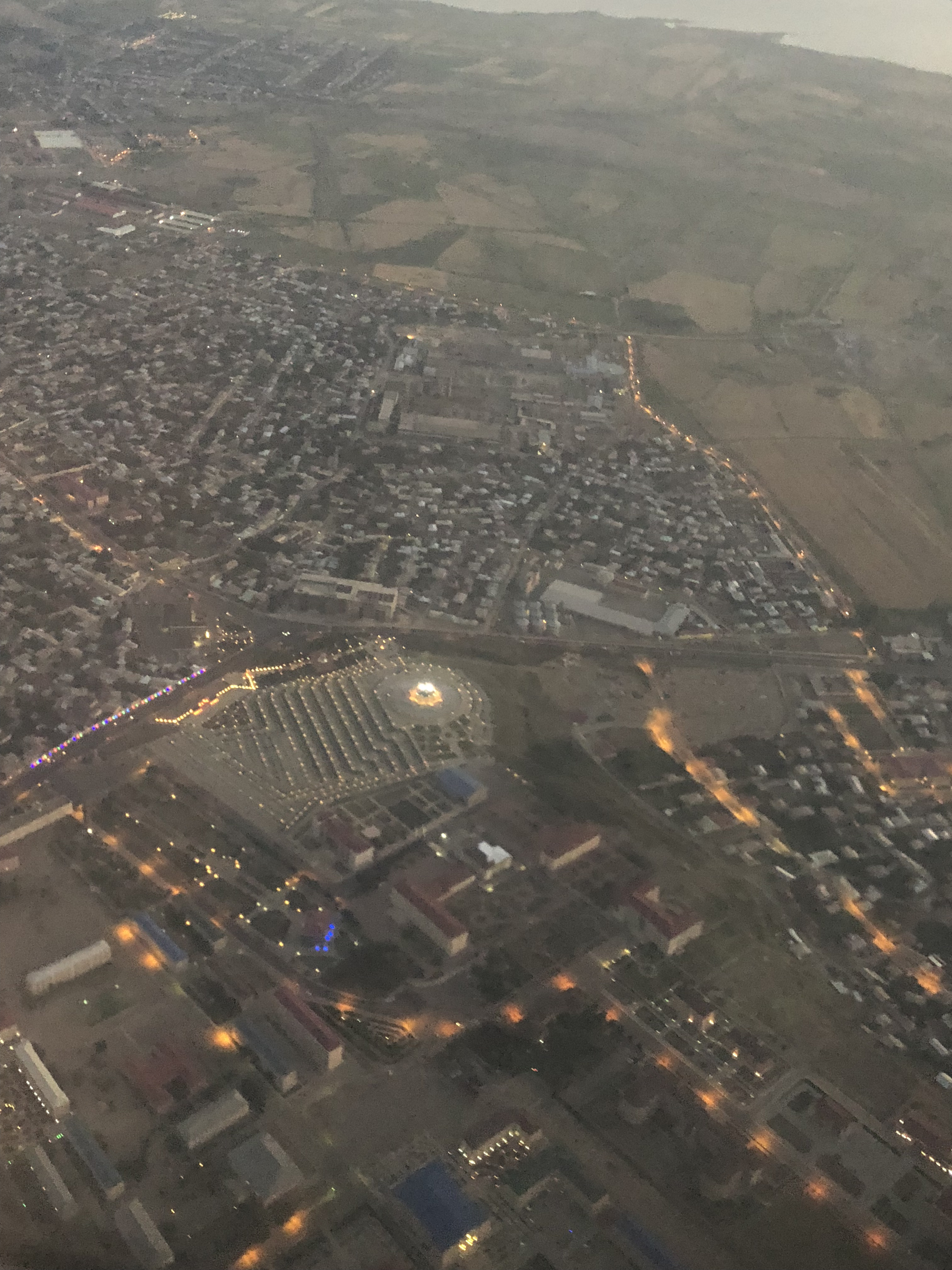
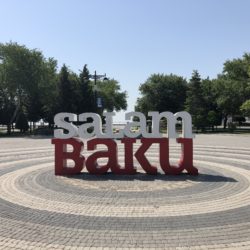
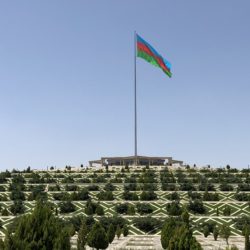
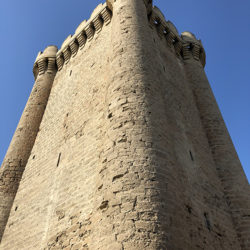
I like your articl
Thank you Edem!